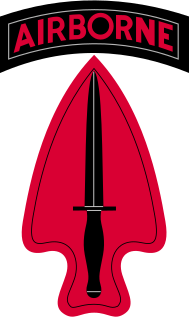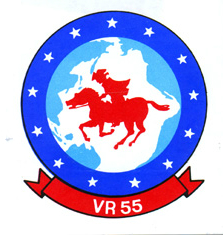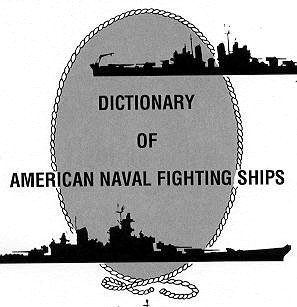
The Chief of Naval Operations (CNO) is the highest-ranking officer and professional head of the United States Navy. The position is a statutory office held by a four-star admiral who is a military adviser and deputy to the Secretary of the Navy. In a separate capacity as a member of the Joint Chiefs of Staff the CNO is a military adviser to the National Security Council, the Homeland Security Council, the Secretary of Defense, and the President. The current Chief of Naval Operations is Admiral John M. Richardson.
The United States Armed Forces are the military forces of the United States of America. It consists of the Army, Marine Corps, Navy, Air Force, and Coast Guard. The President of the United States is the Commander-in-Chief of the Armed Forces and forms military policy with the Department of Defense (DoD) and Department of Homeland Security (DHS), both federal executive departments, acting as the principal organs by which military policy is carried out. All five armed services are among the seven uniformed services of the United States.

The Secretary of the Navy is a statutory officer and the head of the Department of the Navy, a military department within the Department of Defense of the United States of America.

The military history of the United States spans a period of over two centuries. During those years, the United States evolved from a new nation fighting Great Britain for independence (1775–1783), through the monumental American Civil War (1861–1865) and, after collaborating in triumph during World War II (1941–1945), to the world's sole remaining superpower from the late 20th century to present.

The Joint Chiefs of Staff (JCS) is a body of senior uniformed leaders in the United States Department of Defense who advise the President of the United States, the Secretary of Defense, the Homeland Security Council and the National Security Council on military matters. The composition of the Joint Chiefs of Staff is defined by statute and consists of the Chairman of the Joint Chiefs of Staff (CJCS), Vice Chairman of the Joint Chiefs of Staff (VCJCS), the Military Service Chiefs from the Army, Marine Corps, Navy, and Air Force, and the Chief of the National Guard Bureau, all appointed by the President following Senate confirmation. Each of the individual Military Service Chiefs, outside their Joint Chiefs of Staff obligations, works directly for the Secretary of the Military Department concerned, i.e., Secretary of the Army, Secretary of the Navy, and the Secretary of the Air Force.

The 1st Special Forces Operational Detachment-Delta, commonly referred to as Delta Force, Combat Applications Group (CAG), "The Unit", Army Compartmented Element (ACE), or within JSOC as Task Force Green, is an elite special mission unit of the United States Army, under operational control of the Joint Special Operations Command. The unit is tasked with specialized missions primarily involving hostage rescue and counter-terrorism, as well as direct action and special reconnaissance against high-value targets. Delta Force and its maritime counterpart, the U.S. Navy's SEAL Team Six are the U.S. military's primary counterterrorism units. Delta Force and DEVGRU perform the most complex, classified, and dangerous missions in the U.S. military, as directed by the U.S. National Command Authority.

HSV-2 Swift is a hybrid catamaran. She was privately owned and operated by Sealift Inc., and was originally built under the JHSV program as a proof of concept. As part of this program, she was directly leased for evaluation from her builders by the United States Navy Military Sealift Command from 2003 to 2013, primarily as a mine countermeasures and sea basing test platform. Later during her official naval career she was mostly used for fleet support and humanitarian partnership missions.

The Armed Forces Expeditionary Medal (AFEM) is a military award of the United States Armed Forces, which was first created in 1961 by Executive Order of President John Kennedy. The medal is awarded to members of the U.S. Armed Forces who, after July 1, 1958, participated in U.S. military operations, U.S. operations in direct support of the United Nations, or U.S. operations of assistance for friendly foreign nations.

Operation Sealords was a military operation that took place during the Vietnam War.

USS Rodney M. Davis (FFG-60) was an Oliver Hazard Perry-class guided missile frigate of the United States Navy named for Marine Sergeant Rodney M. Davis (1942–1967), who was posthumously awarded the Medal of Honor for his heroism in the Vietnam War.

The Office of Naval Intelligence (ONI) is the military intelligence agency of the United States Navy. Established in 1882 primarily to advance the Navy's modernization efforts, ONI is the oldest member of the United States Intelligence Community and serves as the nation's premier source of maritime intelligence. Since the First World War, its mission has broadened to include real-time reporting on the developments and activities of foreign navies; protecting maritime resources and interests; monitoring and countering transnational maritime threats; providing technical, operational, and tactical support to the U.S. Navy and its partners; and surveying the global maritime environment. ONI employs over 3,000 military and civilian personnel worldwide and is headquartered at the National Maritime Intelligence Center in Suitland, Maryland.

The jack of the United States of America is a maritime flag representing United States nationality flown on the jackstaff in the bow of American vessels that are moored or anchored. The U.S. Navy is a prime user of jacks for its warships and auxiliaries, but they are also used by ships of the U.S. Coast Guard, the predominantly civilian-manned replenishment and support ships of the U.S. Navy's Military Sealift Command, the ships of the National Oceanic and Atmospheric Administration, and other U.S. governmental entities. The jack is flown on the bow (front) of a ship and the ensign is flown on the stern (rear) of a ship when anchored or moored. Once under way, the ensign is flown from the main mast.

Naval Air Station Keflavik (NASKEF) is a U.S. Navy base at Keflavík International Airport, Iceland. It is located on the Reykjanes peninsula on the south-west portion of the island. Built during World War II by the United States Army as part of its mission to maintain the defense of Iceland and secure northern Atlantic air routes, it served to ferry personnel, equipment, and supplies to Europe. Intended as a temporary wartime base under an agreement with Iceland and the British, US forces withdrew by 1947, but returned in 1951 as the Iceland Defense Force, now operating a NATO base. NASKEF was closed on 8 September 2006 and its facilities taken over by the Icelandic Defence Agency as their primary base until 1 January 2011 when the Agency was abolished and the base handed over to the Icelandic Coast Guard which has since then operated the base. The base is regularly visited by the American military and other NATO allies, for military exercises, NATO Air Policing and other tasks. In 2017 the United States announced its intention to modify the largest hangar on the airbase in order to house the new Boeing P-8 Poseidon ASW aircraft being introduced.
The structure of the United States Navy consists of four main bodies: the Office of the Secretary of the Navy, the Office of the Chief of Naval Operations, the operating forces, and the Shore Establishment.

USS Pluck (AM-464/MSO-464) was an Agile-class minesweeper acquired by the U.S. Navy for the task of removing mines that had been placed in the water to prevent the safe passage of ships.

U.S. Naval Forces Southern Command is the naval element of United States Southern Command (USSOUTHCOM). Its areas of operation include South America, Central America, the Caribbean and surrounding waters. Its headquarters are located at Naval Station Mayport, Florida. USNAVSO is currently under the command of Rear Admiral Sean S. Buck.

The United States Navy (USN) is the naval warfare service branch of the United States Armed Forces and one of the seven uniformed services of the United States. It is the largest and most capable navy in the world and it has been estimated that in terms of tonnage of its active battle fleet alone, it is larger than the next 13 navies combined, which includes 11 U.S. allies or partner nations. with the highest combined battle fleet tonnage and the world's largest aircraft carrier fleet, with eleven in service, and two new carriers under construction. With 319,421 personnel on active duty and 99,616 in the Ready Reserve, the Navy is the third largest of the service branches. It has 282 deployable combat vessels and more than 3,700 operational aircraft as of March 2018, making it the second-largest air force in the world, after the United States Air Force.

The master-at-arms (MA) rating is responsible for law enforcement and force protection in the United States Navy—equivalent to the United States Army Military Police, the United States Marine Corps Military Police, the United States Air Force Security Forces, and the United States Coast Guard's Maritime Law Enforcement Specialist. It is one of the oldest ratings in the United States Navy, having been recognized since the inception of the U.S. Navy.

Fleet Logistics Support Squadron FIVE FIVE (VR-55) is a U.S. Navy C-130T squadron that provides a 24-hour logistical support to U.S. Naval forces deployed throughout the world.


















